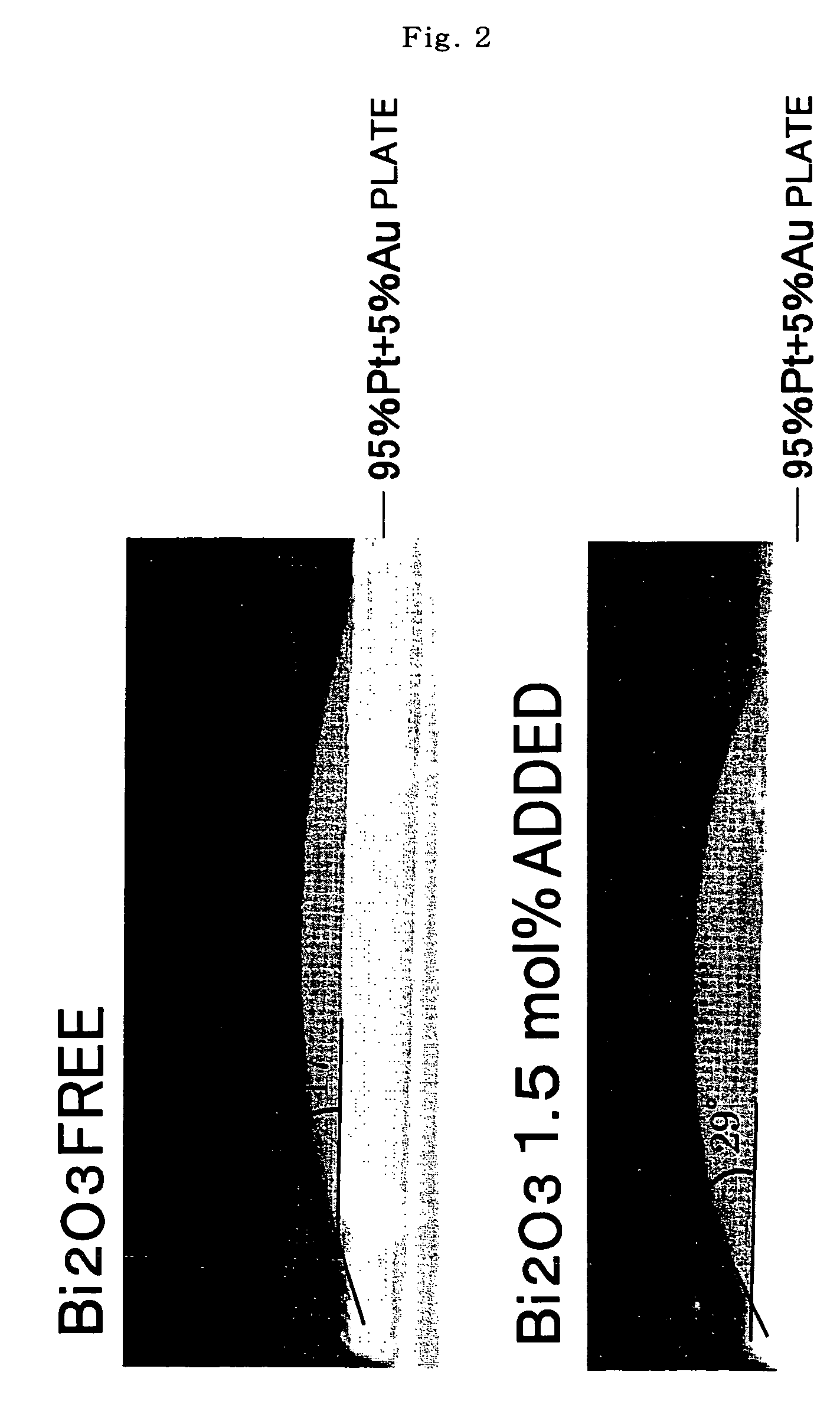Preforms for precision press molding, optical elements, and methods of manufacturing the same
a technology of optical glass and optical elements, which is applied in the direction of glass tempering apparatus, glass making apparatus, manufacturing tools, etc., can solve the problems of compromising the precision of the transfer surface of lenses, requiring maintenance to remove metallics, and not being suited to mass production
- Summary
- Abstract
- Description
- Claims
- Application Information
AI Technical Summary
Benefits of technology
Problems solved by technology
Method used
Image
Examples
embodiments
[0257]The present invention is further described below through embodiments.
[0258]The embodiments and Preforms 1 to 9 are related as follows.
[0259]Embodiments 1 to 9: Preforms 3, 4, 8, 9
[0260]Embodiments 10 to 12: Preforms 1-4, 8, 9
[0261]Embodiments 13 to 17: Preforms 3, 4, 8, 9
[0262]Embodiments 18 to 21, 26, 28: Preforms 5 to 9
[0263]Embodiments 22 to 25, 27: Preforms 6 to 9
[0264]Embodiment 29: Preform 6, 8, 9
embodiments 1 to 29
[0265]Table 1 gives the composition, refractive index (nd), Abbé number (vd), glass transition temperature (Tg), sag point (Ts), and liquid-phase temperature (LT) of the glasses used to make the preforms of Embodiments 1 to 17. Table 2 gives the composition, refractive index (nd), Abbé number (vd), glass transition temperature (Tg), sag point (Ts), and liquid-phase temperature (LT) of the glasses used to make the preforms of Embodiments 18 to 39. In these glasses, corresponding oxides, hydroxides, carbonates, and nitrates were employed as starting materials for the various components. They were weighed out and blended so as to yield the proportions of the composition given in Table 1 following vitrification, thoroughly mixed, placed in a platinum crucible, melted at a temperature range of from 1,050 to 1,200° C. in an electric furnace, clarified, and homogenized by stirring to obtain a glass melt. This glass melt was cast into a preheated metal mold, cooled to the glass transition t...
embodiment 30
[0284]Aspherical lenses were obtained by precision press molding the preforms for precision press molding obtained in Embodiments 1 to 29 in the precision pressing mold shown in FIG. 3.
[0285]The precision press molding was conducted in the following manner. First, a preform from the above embodiments was placed between a lower mold 2 and an upper mold 1. The interior of a quartz tube 11 was filled with a nitrogen atmosphere and a heater 12 was operated to heat the interior of quartz tube 11. The temperature within the pressing mold was set 20 to 60° C. higher than the sag point of the glass. Maintaining this temperature, a pressing rod 13 was lowered, pressing against upper mold 1 and pressing the preform within the pressing mold. The pressing mold employed here was made of SiC with a carbon mold separation film formed on the molding surface to which the glass sometimes adheres. The pressing pressure was 8 MPa applied for 30 seconds. The pressure was then released, the precision pre...
PUM
| Property | Measurement | Unit |
|---|---|---|
| liquid-phase temperature | aaaaa | aaaaa |
| molar ratio | aaaaa | aaaaa |
| molar ratio | aaaaa | aaaaa |
Abstract
Description
Claims
Application Information
 Login to View More
Login to View More - R&D
- Intellectual Property
- Life Sciences
- Materials
- Tech Scout
- Unparalleled Data Quality
- Higher Quality Content
- 60% Fewer Hallucinations
Browse by: Latest US Patents, China's latest patents, Technical Efficacy Thesaurus, Application Domain, Technology Topic, Popular Technical Reports.
© 2025 PatSnap. All rights reserved.Legal|Privacy policy|Modern Slavery Act Transparency Statement|Sitemap|About US| Contact US: help@patsnap.com



